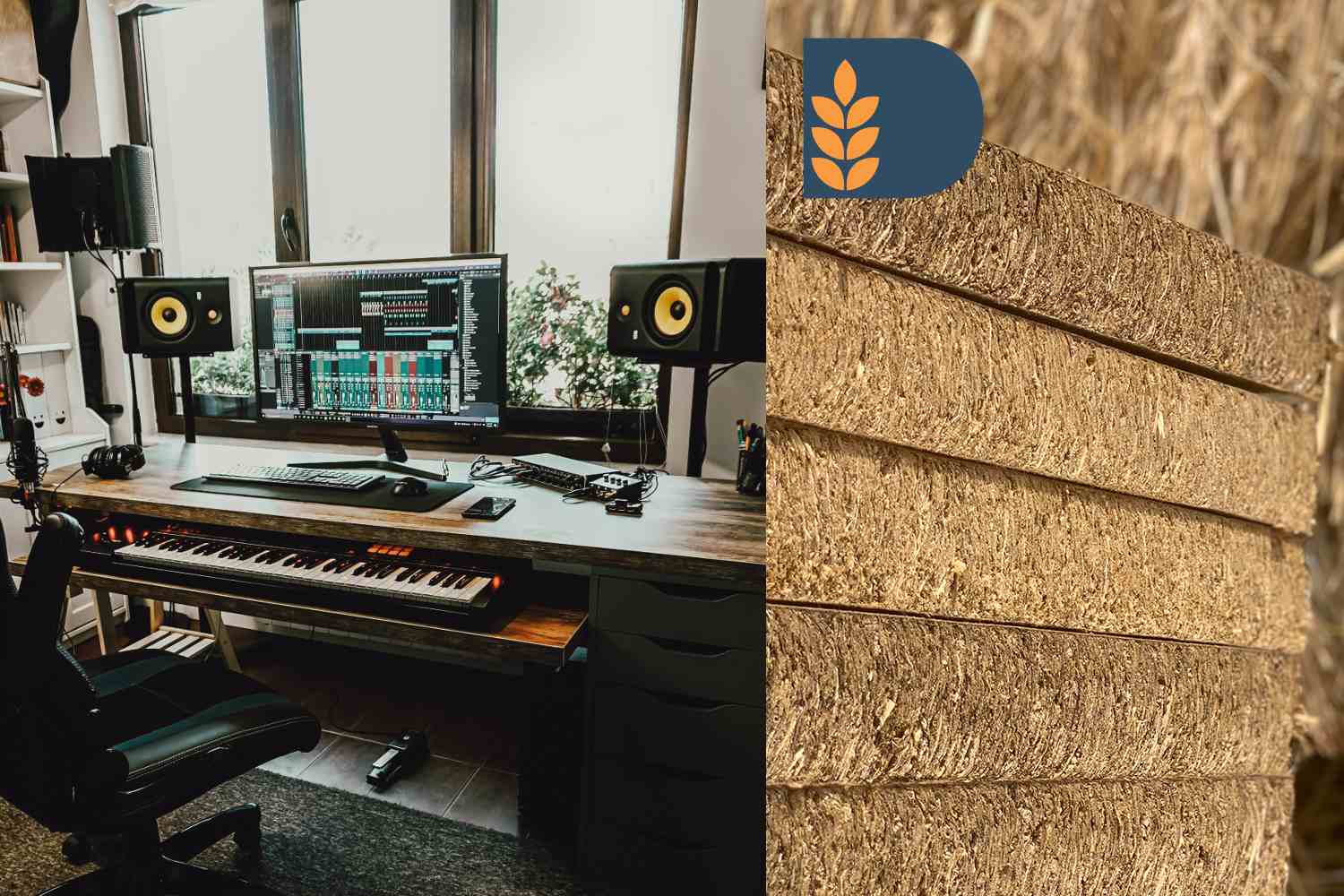Durra Panel have been working at building more environmentally friendly sound absorption and insulation products for decades.
For a lot of us, having a dedicated space to make music is the absolute dream. An optimised, personalised interior in which we can tinker and toil away for hours on end. On paper, it’s a beautiful thing, but in reality, the sheer logistics of creating such a space and the associated costs in doing so can leave your studio dreams stuck in neutral.
Read all the latest features, lists and columns here.
Whether we’re looking into commercial spaces to be hired out for projects or a personal, private studio for our own work and clients, it’s a massive logistical undertaking. Having a space (either under lease or buying a building or some land) is one thing, but acoustically treating it so that sound doesn’t leak in, or out, while making the internal rooms sound good for recording, well, that is another thing entirely.
This generally starts with building a room within a room, decoupling the structures where you can, so that the acoustic energy created in the space dissipates into the air gaps and can’t be heard outside. But, I hear you say, ‘I’m a musician, not a carpenter’, ‘I can barely screw in a rack bolt’. Enter Durra Panel: the simple, sustainable studio solution for the modern musician/engineer.
Durra Panel have been working at building more environmentally friendly sound absorption and insulation products for decades, providing customised solutions and eco friendly building products for their laundry list of top tier clients and having had their hand in some of Australia’s most prestigious and large scale studio builds along the way.
Primarily working with compressed straw fibre, the modern day Durra Panels have an impressive STL (Sound Transmission Loss) rating with a wide range of finishes, making them a great solution for recording facilities, content creation studios and even sports stadiums, thanks to their ability to prevent sound from both leaving and entering into the space. More recently, the brand unveiled their awesome new Acoustic Studio Kits, a simple, easy to assemble solution designed to convert everyday living and commercial spaces into specialised performance, recording and mixing facilities.
“What really sets Durra Panel apart is that our Acoustic Studio Kits are demountable. So if you’re leasing a space and would like to hold on to your studio, you can pack up and re-assemble elsewhere,” explains Steve Layfield, National Sales Manager at Ortech Industries (Durra Panel’s parent company).
As a musician himself, Steve has been at a particularly unique vantage point when it comes to seeing the potential for Durra Panel in the burgeoning home studio market.
“Durra Panel was always marketed for its acoustic performance, but as a musician myself, I noticed an opportunity to develop a package solution for clients seeking a high-performance Acoustic Studio system, without being labour intensive.”
Steve’s initial instincts proved to be on point, with the brands Series 1, Series 2 and Series 3 Studio kits (which offer a completely disconnected “box within a box” and provide the highest acoustic performance for noise sensitive recordings or drum rooms), finding their way into a whole host of high profile studio builds and professional editing suites in recent history. Everything from post facilities in Melbourne, to rural radio stations in far north Western Australia.
“Over the years we have seen some really clever and interesting applications for our studio kits. We’ve seen a fully fledged Series 3 studio kit assembled in the tightest garage space imaginable, have supplied 10 Dolby accredited studio kits to be set up in a large warehouse for film work and have delivered multiple kits up to Karratha WA for a new local radio station. The breadth of application has been astounding.”
Outside of being a simple, cost effective solution for studio builds and demountable recording spaces, perhaps one of the most interesting aspects of the Durra Panel product comes by way of its uniquely sustainable manufacturing process and the impressive STL (Sound Transmission Loss) numbers contained therein.
Durra Panel is made from reclaimed stubble straw, a bi-product from growing wheat, before being extruded to shape and heated to draw out the naturally occurring lignan that allows the panel to bind together and retain said shape. It’s a process that is both sustainable and community driven, with an emphasis on minimising wastage from procurement, right through to transportation and later, installation.
“We purchase the straw directly from farmers local to our Bendigo manufacturing facility,” explains Steve.
“The densely compressed nature of the panel core traps pockets of air that assist in minimising noise break-out or intrusion into the studio space, in turn providing versatile wall and ceiling materials made from a waste resource that would otherwise be discarded.”
The unique manner by which Durra Panel is manufactured also means a chemical free process end-to-end, in turn having the added benefit of introducing no petrochemicals or binders into the overall equation, which is sure to emit a sigh of a relief, considering the surplus of electronics and glowing red tubes we intend to house within our room within a room.
While we can all agree that sustainability and safety should be at the top of everyone’s agenda, it all wouldn’t mean quite as much if the product wasn’t able to cut it, sonically speaking.
Suffice to say, Durra Panel’s unique construction method has the welcome side effect of making it exceptionally good at low frequency noise control and sound deadening, something that is sure to pique the interest of tracking and mix engineers alike.
“The compressed straw core has naturally occurring sound dampening properties, far beyond what you would normally expect to see in foundational building materials’
“This means it can be used as a mass barrier in designing acoustic spaces rather than needing multiple layers of plasterboard to do the same job.”
Durra Panel also offers a range of optional finishes to further achieve higher NRC values such as the Acoustic Pattern finish (NRC 0.49) or Soundsorb finish (NRC 0.70).
The logistics of building a studio can be daunting, but thankfully products like Durra Panel’s new Studio kits are there to make it a much more streamlined and sustainable process.
For more information on what series, sizing and finishes will best suit your project, feel free to drop Durra Panel a line via email [email protected] or by phone on 03 9580 7766.







